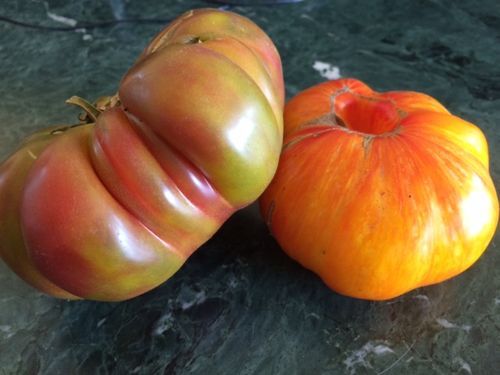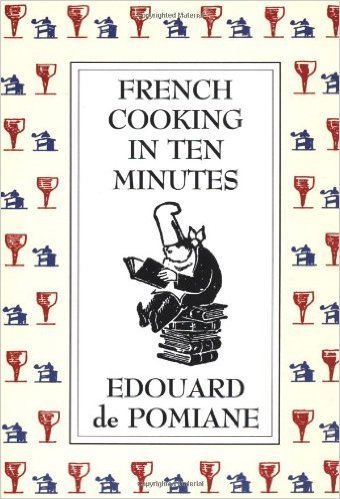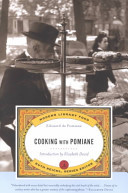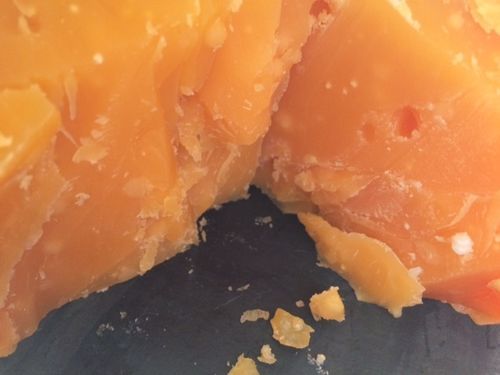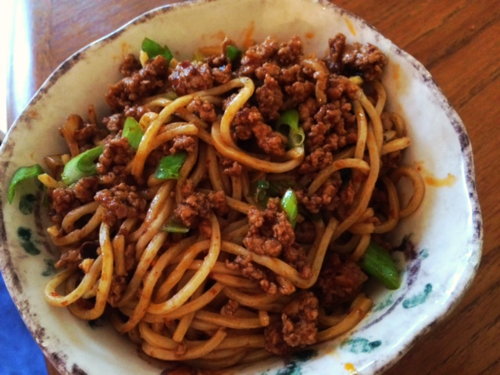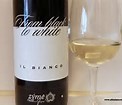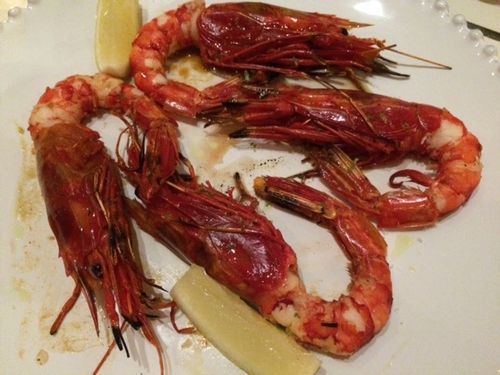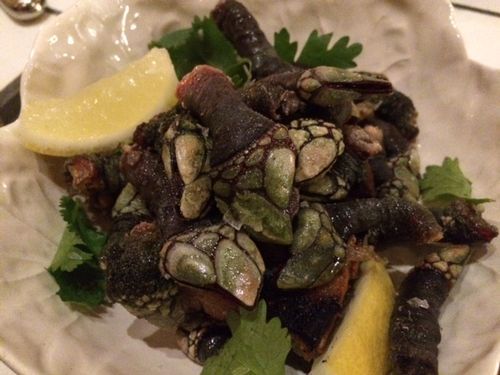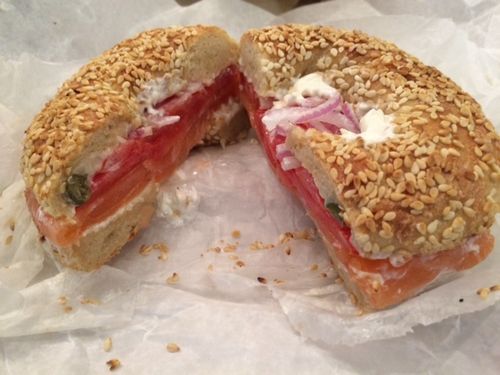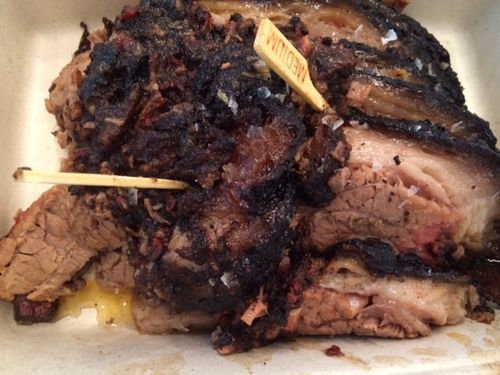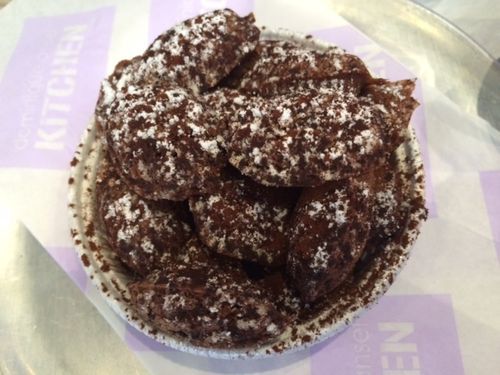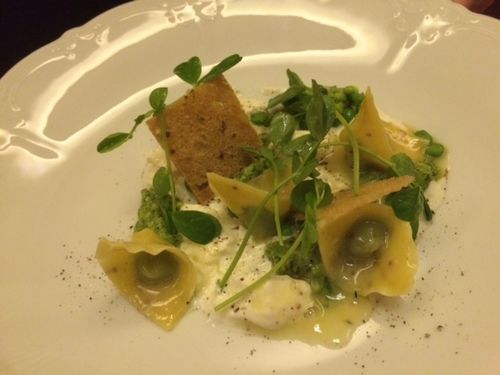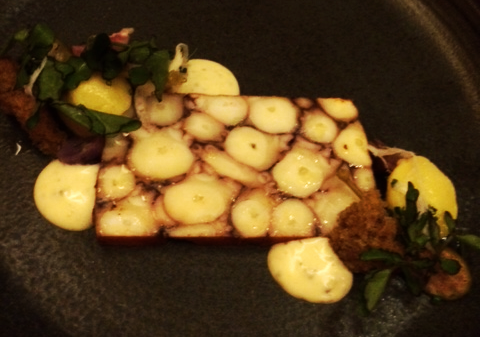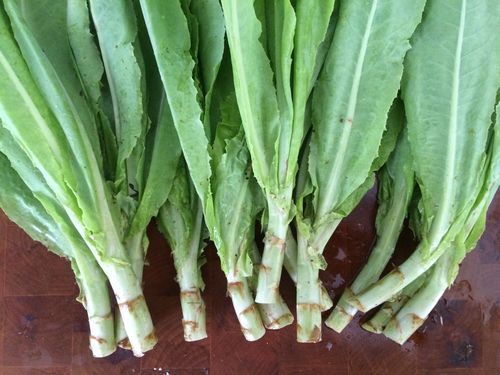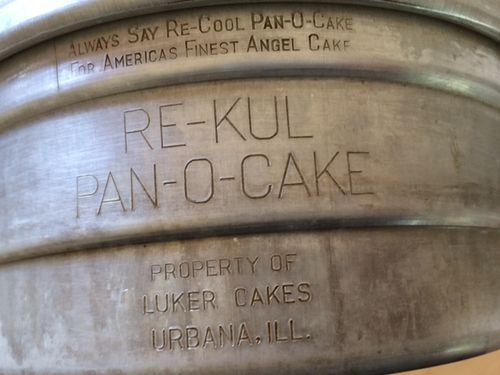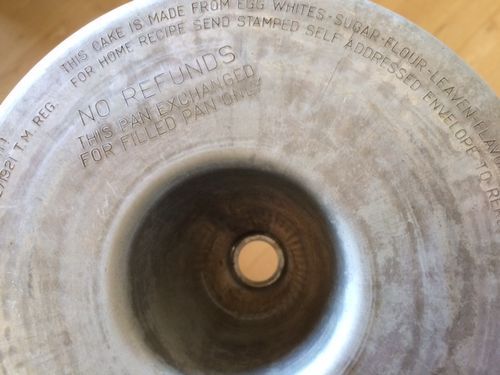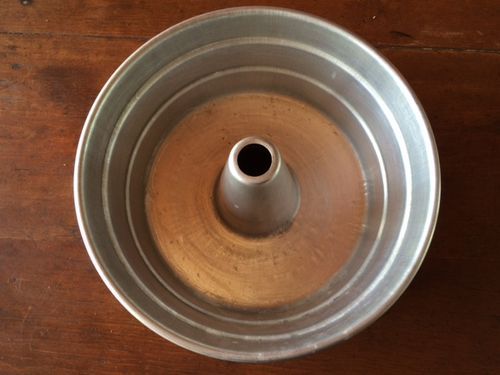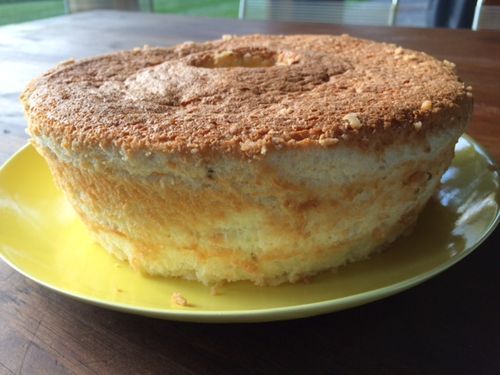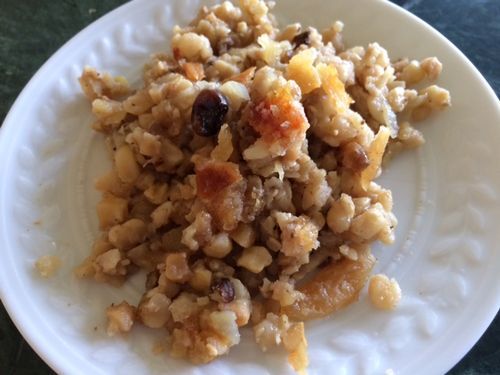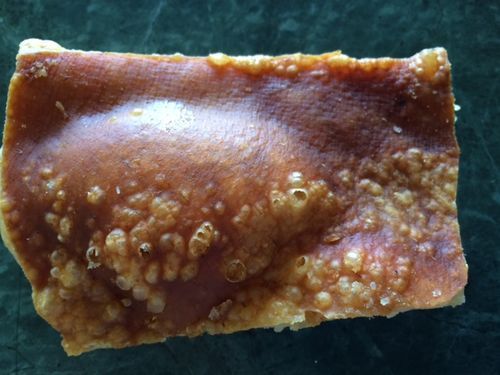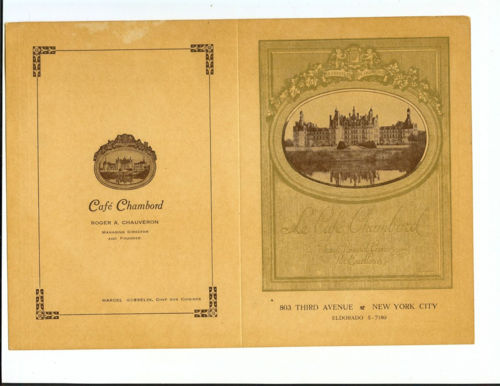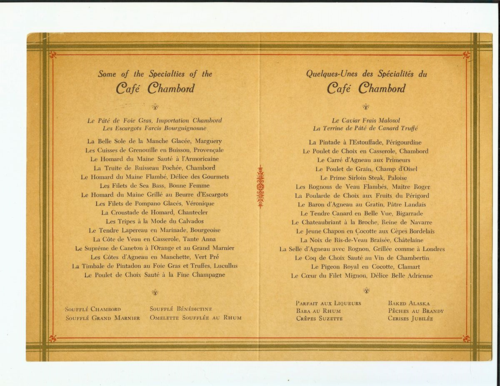Ruth Reichl's Blog, page 8
July 8, 2015
Tomato Season!
Someone recently asked me to list favorite cookbooks, and this is the first one that came to mind.
Edouard de Pomiane was a scientist, a writer and one of the world's greatest demystifiers of the cooking process. He was also, at least judging from his writing and radio programs, a fascinating man with a wicked sense of humor. I'm sorry so few of his books have been translated into English.
Cooking in Ten Minutes is pretty much the opposite of its American counterpart, The I Hate to Cook Book. Pomiane shows you how to make good food from fresh ingredients in very little time with a minimum of fuss. Among his more useful ideas is the notion of boiling potatoes when you have the time to do it and leaving them in the refrigerator. When hunger hits he has a number of suggestions for fast recipes that use them.
Reading Pomiane is always a joy. I recently came upon this little gem, which I plan to serve tonight for dinner.
De Pomiane���s Tomates a la Creme
Take 6 tomatoes. Cut them in halves. Melt a lump of butter in a frying pan, put in the tomatoes, cut side down, and puncture the tops with a sharp knife. Let them cook for 5 minutes.
Turn them over, and sprinkle with salt and cook for ten more minutes. Turn them again so that the juice spread through the pan. Turn the tomatoes cut side up again.
Add 3 ounces of heavy cream. Mix it with the juices. As soon as it bubbles, slip the tomatoes and the sauce into a hot dish. Serve very hot.
If you're interested in de Pomiane, you'll also want to know about this book, Cooking with Pomiane, with its great introduction by Elizabeth David.
July 6, 2015
Things I Love: Just Say Howda
If there's a cheese that's easier to love than aged Gouda, I have yet to encounter it. It has such a sweet seductive flavor and soft fudgy texture that it practically purrs. This L'Amuse Signature Gouda is hand-aged by affineur Betty Koster in her cheese shop in Santpoort-Noord.
Think butterscotch, think caramel, think irresistible. It has a resonant flavor that goes on and on, echoing long after the cheese itself has vanished. I have never met anyone who didn't like it.
Incidentally, if you were in Holland you'd pronounce this cheese HOWda.
July 2, 2015
Two Deliciously Easy Asian Noodle Dishes
These days when I ask Michael what he wants for dinner he's most likely to say "that Chinese pasta please."
I'm always happy to oblige. This is just about the easiest meal I make - and if you're the sort of person who finds yourself ordering in from Chinese restaurants, you should become acquainted. The ingredients are easy to keep on hand, and if you've got some pork in the freezer, you can have dinner on the table long before the delivery man would ring the bell. Ten minutes at most.
Here's the recipe:
Spicy Pork Chinese Noodles
Cook a half pound of Chinese noodles (in a pinch use dried egg noodles or spaghetti) until al dente, drain, toss with a bit of peanut oil and set aside.
Mince fresh, peeled ginger until you have a couple of tablespoons (it should be about a 2 inch long piece).
Chop 2 scallions.
Mix 1 teaspoon of sugar into 2 1/2 tablespoons of Chinese hot bean paste with garlic. Michael doesn't like food very spicy, so I substitute a tablespoon of plain bean paste for some of the hotter stuff. Set aside.
Heat a wok until a drop of water skitters across the surface. Add a tablespoon of oil, toss in the ginger and stir fry for about half a minute, until the fragrance is hovering over the wok.
Add a half pound of ground pork and stir fry until all traces of pink have disappeared. Add the bean sauce mixture and a splash of water; cook and stir for about 2 minutes.
Stir in the scallions and noodles, and quickly toss. Add a drop of sesame oil and turn out onto a platter.
Serves 2.
I've had this strange craving for squid lately, so when I saw some in the market yesterday, I pounced upon it. At home I made this easy pasta, adapted from Bruce Cost's Big Bowl cookbook. Together, the two noodle dishes made an extremely satisfying meal.
Noodles with Squid and Black Beans
1/2 pound squid
1/2 pound Chinese noodles
oil
3 tablespoons chicken stock
1/2 teaspoon salt
1 1/2 teaspoons sugar
2 tablespoons oyster sauce
1 tablespoon light soy sauce
4 tablespoons shredded ginger
4 sliced scallions
1 jalapeno, shredded
2 cloves garlic, smashed
1 1/2 teaspoons fermented soy beans (Chinese salted black beans)
2 tablespoons dry sherry
splash sesame oil
Separate the squid into tentacles and bodies, and cut the bodies into 1 inch rings. Toss them into a pot of boiling water for about 30 seconds, then rinse in cold water to stop the cooking, rinse again and set aside.
Cook the Chinese noodles for about 3 minutes. (Again, if you can't find Chinese noodles, plain spaghetti or egg noodles can step in.) Drain, refresh with cold water, then toss them with a teaspoon of oil and set aside.
Mix chicken stock, salt, sugar, oyster sauce and light soy. Set aside.
Heat a wok or heavy saute pan. Slick with oil. Add the ginger, scallions, chile pepper, garlic and black beans. Stir until fragrant. Add the liquid mixture and cook for a minute. Toss in noodles and toss for another minute or two. Add the squid and the sherry, toss again, splash in the sesame oil and serve.
Serves 2.
June 29, 2015
An Uncomplicated Version of Paella
This isn't really a paella that anyone in Valencia would recognize as real, but it certainly made a festive Sunday night dinner. The tumble of flavors - saffron, chorizo, pimentos - with that wonderfully fat and slightly chewy rice is absolutely irresistible. And although this is a protein-heavy meal, if you eliminate the shrimp, it's not all that expensive. Next time I'm going to try it without, just for science.
Cheater's Paella
2 1/2 cups homemade chicken stock
1/4 to 1/2 teaspoon saffron threads
1 pound boneless chicken thighs
Salt, pepper
2 tablespoons olive oil
1/2 pound chorizo, cut into 1/2" slices
1 onion, chopped
2 cloves garlic, smashed
2 whole jarred roasted peppers, diced
1/2 pound medium shrimp, shelled
1 1/4 cups bomba rice (arborio or canaroli are acceptable substitutes)
1 bay leaf, crumbled
1/4 cup dry white wine,
1/2 lemon, squeezed
1 pound littleneck clams, washed and purged
1 pound squid, bodies separated from tentacles and cut into 1 inch rings
Heat the stock with the saffron. Cover and simmer 15 minutes. Set aside
Heat the oil in a large flat pan or paella pan and cook the onions, garlic and pimentos until they're fragrant, about 10 minutes. Add the chorizo and cook, stirring every once in a while, another 10 minutes or so.
Dry the chicken thighs, sprinkle them with salt and pepper. Push the onion/chorizo mixture aside and add the chicken to the the pan, turning occasionally, until it has lightly browned on all sides, about 5 minutes.
Add the rice to the pan and stir to coat it well with the oil. Toss in the wine and let it cook away. Add the bay leaf.
Preheat the oven to 325��F. Bring the chicken stock to a boil and add to the pan. Simmer 10 minutes.
Bury the shrimp, chicken, clams and squid in the rice, as well as you can (much of it will still be sitting on top), and bake, uncovered, until the clams are open, about 25 minutes. Remove from the oven, and if there is still liquid in the pan (bomba rice can be slow to absorb liquid), cook over medium heat for another 10 minutes or so.
Cover and let stand for a few minutes before serving.
Purging Clams
Add a tablespoon of sea salt (it must be sea salt) to 2 cups of water. Add the clams and allow them to sit in the bowl, in the refrigerator, for a few hours. Watch the clams stick out their necks - and then watch how much sand they secrete into the bottom of the bowl.
June 27, 2015
The Excess Express Zooms into New York
It's been a wonderful couple of days in America. Obamacare is safe. People can marry the partners of their choice. And our president can sing! It seemed like a great time to celebrate. And how better to do that than with food?
My odyssey started with a drink at the Library at the NoMad hotel - surely one of the city���s most civilized spots. This wine was totally unknown to me - Rondinella Bianco from Zyme. It's clean, refreshing - perfect for a warm summer evening. I'll be looking for it again.
On to Lupalo. The highlights at this raucous Portuguese gastropub were these incredible shrimp ($13 each!)
and percebes - gooseneck barnacles. I've had these often in Europe, but the last time I tasted the strange little creatures in the United States was when the much-missed Jean-Louis Palladin served them at a special dinner he was cooking with Joachim Splichal. I hope their appearance here means we'll start seeing gooseneck barnacles more frequently on American menus.
Spent a wonderful few hours at Brookfield Place - a total madhouse, but great fun. Highlights there were the bagels from Black Seed
and the spectacular brisket from Mighty Quinn. We asked for meat that was not lean - and then asked them to scrape the board after cutting the meat. The result was totally delicious decadence. If you love barbecued brisket, this will make you very happy.
Downstairs, we roamed through the vast Le District marketplace - a francophile version of Eataly. It's a wonderland of food, with a fragrant rotisserie, a lovely bakery, an enormous restaurant, local produce..... What intrigued me most were the beautiful little sandwiches on true ficelles - and the butcher shop with cases filled with such gorgeously aged and marbled beef I wished I could take some home. But we still had hours of eating ahead of us.
On to Dominique Ansel Kitchen for the irresistible burata soft serve ice cream - and a few of these warm, barely sweet and absolutely fantastic chocolate madeleines.
And then, because it was thrilling to be so close to Stonewall on this historic Friday, we went to Via Carotta for a celebratory glass of wine and a few radishes dipped into the most delicious bagna cauda. The secret? I think it���s excellent anchovies and butter.
Dinner at Batard, which produces some of the city' prettiest dishes, like these delicate pea-filled tortellini:
and this intense octopus terrine:
And then - just because it was not yet midnight, and we wanted to squeeze in one more meal, we ended the evening at Aldo Sohm, the wonderful Le Bernardin wine bar. And after a bottle of wine we discovered that yes, we could manage a few tiny boudin blancs, some spicy chicharrones and an entire baked camembert.
The eating finally ended, we had a long walk home through almost-quiet early morning streets. I love New York.
June 23, 2015
So Rare
The first time I encountered celtuce I was thrilled and amazed. But these days it's less exciting to see celtuce on a menu - many Chinese restaurants now source this Asian stem lettuce year-round. During its short local season (late spring- early summer), Stone Barns, Blanca, and Eleven Madison Park all succumb to it���s singularly refreshing snap. Celtuce has been having its moment.
But it���s a tricky crop to buy and cook for yourself. The growing season is abysmally short; I���ve never encountered celtuce as young, sweet and tender as that I���ve found in Sichuan restaurants. And since it���s mostly grown for it���s stalk, the milky greens are plucked during growth so they won���t hog all the flavor. It's rare indeed to find celtuce with leaves young enough to eat.
So this weekend, when I found this rare young specimen at the farmers market , I marveled at its perky slender leaves. Celtuce was suddenly new again to me. At home I trimmed off the ends, set the stems in a jar of water and put them into the refrigerator. When I was ready to cook, I peeled the tiny stalks, reveling in the sweetness of their flesh as I simply ate it raw.
I decided to treat the leaves like pea shoots. I splashed a tablespoon of peanut oil into a hot pan, added two cloves of smashed garlic, swirling them for a few seconds, then tossed in the leaves and a small sprinkle of salt. With just a wiggle of the wrist, and a toss with a spatula, the leaves wilted. I added a small pour of Chinese cooking wine, waited for it to evaporate, and brought the celtuce to the table. With a little bowl of rice on the side, they made a lovely summer lunch. (Some may yearn for a splash of soy, but I reveled in their sweet austerity.)
Rare, yes. But hopefully not for long.
(I wish I'd put a dime next to the celtuce for scale: the stalks are that thin!)
June 21, 2015
Angel's Food
When I was in Madison a couple of weeks ago, a pleasant gentleman came up to ask if I���d ever heard of a Rekul Pan-O-Cake.
I hadn���t. He handed me a Xerox of a Clementine Paddleford Food Flash from Gourmet in 1947. Here���s Ms. Paddleford.
"Angel foods, the real heavenly kind, snowy white, soft as down, tall and lithesome, are going places by mail, traveling in the Wearever aluminum pans in which they are baked. These are big cakes, the thirteen-egg kind, nine inches in diameter, four inches high. The price, $2.50 post paid.
The pan is yours, or return it for a refill. The next cakes costs but $1.25."
To make a long story short, Jackson Luker discovered that his angel food cakes got better over time if he left them in the pan. And so he started his mail order business. By 1947 he was selling half a million cakes a year. That's an awful lot of egg whites.
The company is no more, but I was curious. I found a couple of the old Rekul pans on Ebay and immediately ordered them. They���re sturdy pans - and they really do make great cakes.
The man in Madison? He���s Jack Luker���s son - and he remembers growing up ���washing the concrete-like dried crust out of the pans in order to bake more cakes."
I���m with him there; these are great pans - but it���s hard to get the cakes out (you���re supposed to bang the cake on a board, really hard, to remove it from the pan) - and even harder to wash the pans.
The Best Angel Food Cake Recipe I Know
When my friend Marion Cunningham was working on The Baker���s Dozen Cookbook, she sent a recipe for Angel Food Cake to thirty-five bakers, asking them each to bake the cake, exactly as written, and bring it to a meeting. She called me afterward in great excitement; ���You would not believe how different they were,��� she marveled. ���They all had holes in the middle, but other than that, each cake was unique.��� Appalled by this, she and the other bakers decided to perfect the recipe. This cake, created by Flo Braker, is angel food perfection. Follow these instructions and you will have a high, white cloud-like confection that truly does seem food fit for angels.
Five Steps to a Better Angel Food Cake
1. Cold eggs are easier to separate, so do it when the eggs are right out of the refrigerator.
2.If even the tiniest amount of fat gets into the eggs they will refuse to whip. So separate each egg white into a separate bowl before adding it to the others, in case one of the yolks breaks.
3. Leave your egg whites in the bowl, out of the refrigerator, for about an hour. If you have an instant-read thermometer, the optimum temperature is 60 degrees. The white are more viscous at this temperature, and the air bubbles are more stable. (Room temperature is about 70 degrees; they will whip more quickly, but at this temperature they are easy to overbeat.)
4.To insure that there is no grease on the bowl or beater, wipe them with white vinegar and rinse in very hot water. Dry well.
5. Make sure your oven is 350 degrees. If the oven���s too low, the sugar will absorb the liquid from the egg whites and turn syrupy. If it���s too hot, the outside will set before the interior.
6. Allow the cake to cool completely before removing it from the pan.
Angel Food Cake (from Baker���s Dozen Cookbook)
12 large egg whites
1 1/2 cups sifted confectioner���s sugar
1 cup sifted cake flour
1/2 teaspoon salt
1 1/2 teaspoons cream of tartar
1 cup granulated sugar
1 teaspoon vanilla.
Allow the egg whites to sit in the bowl of a stand mixer for about an hour, to come to just above room temperature (70 degrees).
Sift the confectioner���s sugar, cake flour and salt together.
Whip egg whites at low speed until they are foamy. Add the cream of tartar and increase the speed to medium. Keep whipping, gradually adding the cup of granulated sugar, until the whites thicken and form soft, droopy peaks. Add vanilla.
Sprinkle a quarter cup of the flour mixture over the whites and fold it in, by hand, with a rubber spatula. Repeat with the next quarter, and the next, until all the flour has all been gently folded in. Pour into an ungreased 10-inch tube pan.
Bake at 350 degrees, 40 to 45 minutes, until the top is golden, the top springs back when you touch it, and a toothpick comes out clean. Invert the pan onto the neck of a bottle. Leave for 3 hours so that the cake is completely cool.
Run a knife around the sides of pan until you feel it release. Then push up the bottom of the pan. Loosen the cake bottom by tapping on a counter until it���s free and invert onto a plate, and then back onto a cake platter.
Slice with a serrated knife.
June 20, 2015
A Completely New (to me) Ingredient
Chicos
When I was in Tucson a few months ago, I was lucky enough to go to the Anita Street Market. As I was paying for the spectacular tacos, I noticed little bags sitting next to the cash register, filled with a substance that looked like broken amber beer bottles. The shapes were shiny, irregular. "What is that?" I asked.
The cashier glanced down at the bag. He shrugged. "Chicos." He pointed to a shelf. "These are ours. Those over there are from a local farmer. I like ours better. They're smokier."
"Add them to my bill," I said, sticking the little plastic bag in my pocket book. Where I promptly forgot them.
I found them the other day, still hidden in the bottom of my purse. With no idea how to deal with them, I did a little research. The dried, smoked, broken corn kernels are an ancient ingredient beloved by the Indian nations of the Southwest. Apparently they're easiest to find in New Mexico.
Unsure of what to do with them, I made up my own version with what I happened to have on hand. I'm sure there are better ways to cook chicos, but everyone who came to dinner last night loved my thrown-together dish. I did too.
I began by soaking 2 cups of chicos overnight, as I'd do with beans. In the morning I drained them.
I chopped a couple of onions and a few cloves of garlic and sauteed them in a couple tablespoons of duck fat. (I'd cooked a duck the night before, and just happened to have it sitting by the stove. Ordinarily I'd use vegetable oil or bacon grease. But duck fat adds its own wonderful layer of flavor. )
When the alliums had given their fragrance to the air, I added the soaked chicos, a teaspoon of salt and a bay leaf, along with 6 cups of the duck stock I'd made with leftover duck bones. (Chicken stock or water would undoubtedly work well too.)
I cooked the chicos for about 3 hours, until they were soft. Next time, just for science, I might try cooking them a little less, so they maintain some crunch. The recipes I've found online seem undecided on this point.
But then, the piece de resistance. I'd been cooking some pork skin, and when the chicos were done I chopped some up and stirred that in. The cracklings were the same color as the chicos, but they added crunch, fat and flavor to the smokey goodness of the chicos. It was absolutely delicious - and not like anything I've tasted before.
Crackling Pork Skin
I'd bought a pork shoulder from North Plains Farm, who raise the most delicious pigs. At home I decided to slice off the skin and cook it separately. So I salted it really well, rolled it up like a jelly roll and left it to sit in the refrigerator, well wrapped in plastic, for a few days.
Then I put it into a gratin dish (so I could capture the fat as it melted) and left it in a slow (325) oven for four hours, turning it every hour or so. Halfway through it was almost submerged in its own fat, making this essentially confit.
When it came out of the oven the crackling was so delicious we pounced on it, devouring it with such glee we barely left enough to shred over the chicos.
June 19, 2015
Perfect Summer Lunch
Steamed Ipswich Clams
I think I have just definitively solved the question of how to purge the sand from these delicious little morsels.
There's nothing more annoying than sitting down to a big bowl of steamers and finding yourself with a mouthful of grit. You want to get them really clean.
I've always used salt water and cornmeal. No more. From now on it's strictly salt water for me.
A friend arrived with a bucket of steamers a couple of days ago. "They're just-dug," he said, "and really sandy. So you'll have to clean them well."
"Did you bring me some seawater?" I asked. Seawater is their natural medium, and it makes them very happy. He'd neglected to do that, so I stirred 2 tablespoons of sea salt into 4 cups of water, gently lowered my clams into their new home and stuck the bowl in the refrigerator. I decided to leave them overnight; by morning, if the water wasn't filled with grit, I'd feed them some cornmeal.
In the morning I found the entire bottom of the bowl filled with sand. I cleaned out the bowl, added more salt water, and left the clams to rest for another day. Every time I opened the refrigerator it gave me a little thrill to see them sitting there, their feeder tubes extended to a full 4 inches.
I cooked them by steaming them in an inch or so of water for about 5 minutes, until all the shells were open. There was not a single grain of sand in the entire bowl. A perfect little lunch.
Next time I get some steamers, I think I'll fry them. If there's one thing that's better than a bowl of steamed clams, it's a plate of freshly fried Ipswichs.
June 17, 2015
Old Menus: Cafe Chambord
Why do I even have these menus? No idea. I suspect that a reader sent them to me, as a special treat, when I was at the Los AngelesTimes. Otherwise I have no explanation for the presence of a menu belonging to a restaurant that closed about the time that I was born.
But I do remember my parents talking about Cafe Chambord, which opened in 1936; Mom said it reminded her of the bistros she went to in Paris when she was at the Sorbonne. It was, she said, small and rather rustic. At least in the beginning. Then, in 1942, owner Roger Chauveron got his hands on a great wine cellar at a bargain price. He'd worked at all of New York's one-named big-deal hotels - The Ritz, The Plaza, The Astor, The Commodore - and now he raised the level of the food to match his swell new wine list. Before long it had become a favorite haunt of the French emigres flooding to New York to escape the war. They were soon joined by prominent New Yorkers (the Rockefellers), and movie stars (Greta Garbo was a fan).
Chauveron sold the restaurant in 1950 and went back to France. He didn't stay long; in 1955 he was back to open Cafe Chauveron. I never went there either, but here's Gael Greene's paean to that restaurant.
Ruth Reichl's Blog
- Ruth Reichl's profile
- 2980 followers


